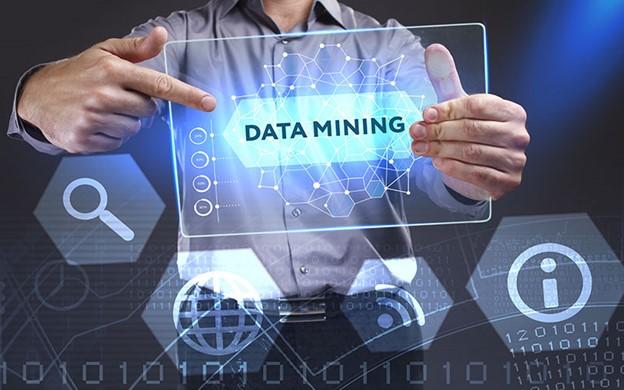
Data Mining
Process in Data Mining
Basically, the existence of data mining is needed considering the increasing amount of information in the technology era such as business transaction data, scientific data, images, videos and other data. With this amount of data, a system is needed that is able to extract the essence of all available information and make summaries to help make better decisions.
The data mining process consists of several steps, namely:
1. Business understanding
The first step in the data mining process is to define project goals and find out how data mining can help you achieve those goals. In this stage a plan must be developed such as determining the schedule, action, and division of roles.
2. Data understanding
The next step is to collect data from all available data sources. At this stage, data visualization tools are used to explore the properties in the data.
3. Data preparation
In this stage the data that has been collected will go through data cleaning and data transformation. Data cleaning or data cleaning is carried out on inconsistent or incomplete data while data transformation is done by changing the data to make it useful in data mining.
In data transformation, several things can be done such as smoothing (removing noise from data), data aggregation, generalization, normalization, and attribute construction. The data preparation process can usually take up the most time of the entire process. That's why at the data preparation stage, usually a DBMS or database management system will be used to increase the speed of the data mining process.
4. Data modeling
At this stage a mathematical model is used to find patterns in the data. The modeling technique will be adapted to the business objectives at the outset. In addition, a new scenario will be created to test the quality and validity and then run it on the prepared dataset. The results must be assessed to ascertain whether the model can meet the data mining objectives.
5. Evaluation
The data findings will then be evaluated and compared against business objectives to determine if can be used across the organization.
6. Deployment
In this final stage, the data mining findings will be shared with various business operating platforms within the company.
The Benefits of Data Mining
By doing data mining, companies can get many benefits. Some of the benefits of data mining are:
Easy decision making
Companies can continue to analyze and automate routine decisions without delays due to human judgment. Make accurate predictions for planning. Data mining helps the planning stage and provides precise information to make predictions based on past trends and current conditions.
Cost reduction
Data mining allows companies to use the allocation of funds more efficiently because the automation of decision making can reduce costs.
Gain insights about customers
Companies can find out the characteristics between customers so that they can design strategies that can improve customer experience appropriately.
The Application of Data Mining
The use of data mining itself is quite extensive. Usually data mining techniques are used to build machine learning models that can support modern artificial intelligence applications such as search engine algorithms or recommendation systems. In addition, data mining is often used in various industries and disciplines such as:
Communication
Data mining is used by multimedia and telecommunications companies to understand the volume of customer data and predict their behavior and offer targeted or relevant campaigns.
Insurance
Another application of data mining is in the insurance industry. Insurance companies generally use data mining techniques to detect fraud, identify risk factors in filing claims, analyze customers, to find ways to offer competitive products to their existing customer base.
Manufacture
Data mining is used to adjust supply plans and demand forecasts, quality assurance, predict production assets and anticipate maintenance.
Retail
Data mining is used to help companies optimize marketing campaigns, improve customer relationships and forecast sales.
Education
Data mining helps educators access student data and predict achievement levels and provide insight into which students or groups of students need extra attention
Banking
Data mining helps financial services companies to get a better view of market risk, detect fraud, and manage regulatory compliance and to get optimal returns from marketing investments.
Problems in Data Mining
Technically and process, data mining can also cause problems or obstacles. As for some of the obstacles and problems in the process of working on data mining that are commonly encountered can be grouped in several ways as follows:
1. Methodological barriers
The first problem or obstacle in data mining is a methodological issue. In this case, the main obstacle is the very diverse types of information or knowledge from various types of data. Not only that, methodological can also find problems from efficiency, effectiveness, and scale of performance.
Evaluation of incomplete data handling patterns and processes is also a problem in data mining methodologies. This is still coupled with the process of applying the method in parallel, distribution, addition and fusion of knowledge.
2. User interaction
Data mining problems then arise during presentations or interactions with users (users). This is generally related to the use of query languages for data mining and the determination of expressions or visualization of data mining results. The interactive information mining process at various levels of data mining can also be another problem that may hinder the data mining process.
3. Applications and social impacts
Other data mining problems arise in the application and social impact section which generally include special data mining involving domains and incognito (invisible). This problem also occurs in the data mining process which is hampered by the protection of data security, integrity, and user privacy. This obstacle is a social impact of the open data mining process.
Well, now you understand why data mining is important for all industry practitioners. Begin to deepen your knowledge and abilities in this field. Moreover, by deepening your skills in this field, you will also indirectly learn a lot about algorithms, computing architectures, data scalability, and automation to handle large datasets.



